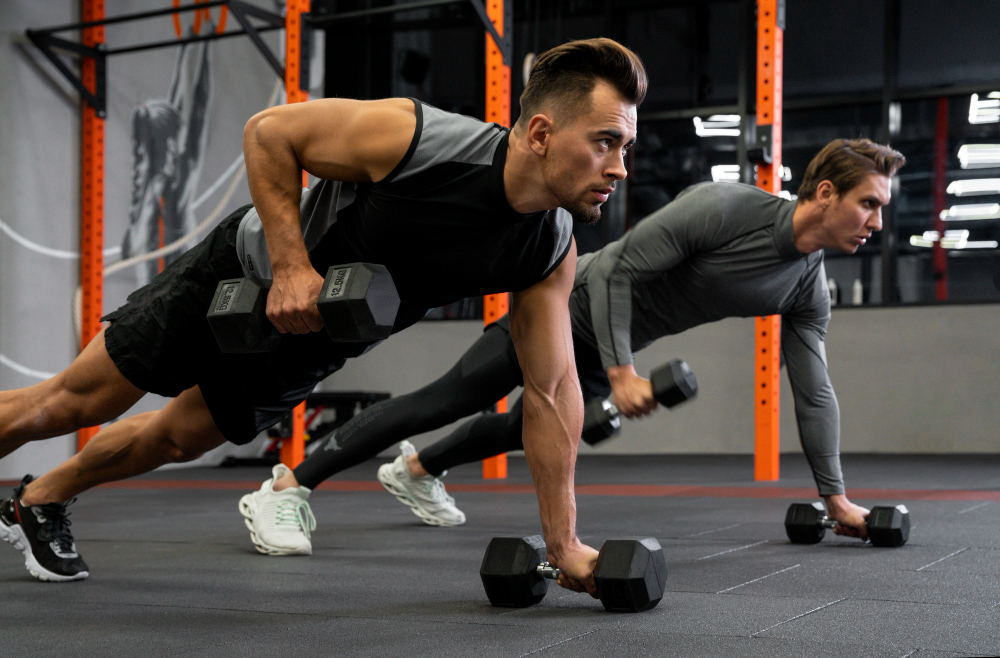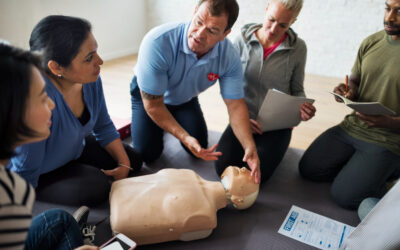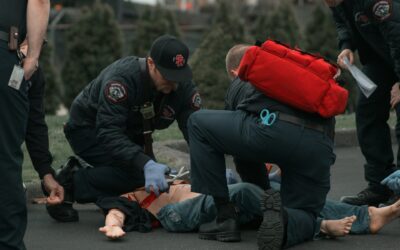There’s an assumption that EMTs (Emergency Medical Technicians) and paramedics are all in great shape because of the physical requirements of being a first responder. But stress, access to fast food, and lots of sitting on the road in your unit can add up!
Yet, physical fitness is crucial in emergency response. In a critical medical situation, your ability to help patients demands strength, stamina, and agility. Physical fitness is also essential for maintaining your mental health under the pressures of emergency response.
Today, we’ll break down the fitness levels required and how to maintain your physical health as an EMT!
Paramedic & EMT Physical Requirements
Emergency response is physically demanding. It’s vital that you meet the physical requirements so you can meet the demands and help patients, even when you’re under pressure. Your EMT program likely has certain health markers and physical demands you must meet before you start rendering emergency medical services. Even private ambulance services and services to transport patients may have requirements for their workers.
So, what are these requirements? The exact requirements can vary based on the organization, but most medical emergencies call for first responders who can physically meet the demands of the situation. Here are several of the most critical physical requirements for work of this nature.
Strength & Lifting
EMTs and paramedics have to frequently lift patients, equipment and gurneys (and often from awkward positions). Most units’ baseline expectation is to lift at least 100 pounds. Some scenarios also require you to work with a partner when lifting heavier objects and maneuvering patients.
Mobility & Endurance
Working with patients as a medical responder involves a lot of bending, kneeling, crouching, and climbing. Mobility and flexibility are essential. Endurance is also a vital EMT requirement—you need good physical stamina to keep up during long (sometimes 12-hour +) shifts.
Balance & Coordination
Balance and coordination may not seem as important as strength, flexibility, and stamina, but they’re crucial in a chaotic emergency scene. EMTs and paramedics may need to navigate uneven terrain, climb flights of stairs with heavy equipment, and perform complex medical procedures with dexterity.
Building up your physical health is positive for many reasons. Not only does it help you better serve patients, but it protects you from career-ending injuries. By staying fit and healthy, you’re going to prolong your wellbeing so you can keep contributing to the wellbeing of those in your community—and that’s what makes EMTs like superheroes!
How to Increase Your Physical Fitness as an EMT
How do you make sure that you’re physically up to all the tasks of your EMT job? Whether you’re just considering a career as a first responder or maintaining your health on the job, there are several important actions you should be doing regularly.
1. Strength Training
Strength is one of the most stabilizing forces for your body. When you have built proper muscles, you’ll counteract stress on your joints and ligaments. Strength training helps to burn fat and build muscle, boosting your metabolism and energy levels.
How to Strength Train: Add weightlifting to your exercise routine several days a week. You’ll want to target the major muscle groups in your legs, back, core, and arms. Squats, lunges, deadlifts, and rowing are excellent options for muscle building. Keep in mind, strength training should focus on high reps of low weight—the goal isn’t to look like a bodybuilder but rather a fit cross trainer. Lifting low reps at high weight is what commonly leads to injury.
2. Cardio Conditioning
Working on your cardiovascular health is also very important to doing the job of an EMT. It’s your cardiovascular system that helps you to build endurance and energy. Cardio doesn’t have to mean running a marathon; even regular walks can be the literal first steps to boosting your mental and physical health.
How to Get Cardio: Build cardio into your schedule around five times weekly for 20–30-minute bursts. Practice regular exercise like running, swimming, or biking. Walking and hiking can also help you build your cardiovascular stamina, so even taking a few walk breaks per day will help.
3. Core Strengthening
Your core is the center of your body—your power source. Much of the strain of lifting, moving, and bending is due to weakness in your core. When your core is strong, you’ll be more stable, faster, and less prone to injury.
How to Build Your Core: Consistent planks and crunches are the two most classic core-boosting exercises, but plenty of other moves strengthen your core, too. Yoga, weight training, and even practicing proper posture when sitting can help increase your core strength.
4. Flexibility Work
How is your range of motion? In an emergency response, you’re going to be bending, twisting, and reaching all the time—often in a cramped ambulance. It’s important that you stay flexible and listen to your body. Stretching shouldn’t hurt, but you should gradually progress as you increase your flexibility.
How to Build Flexibility: Yoga and Pilates are two great ways to boost your flexibility. A series of simple stretches and movement routines will increase your range of motion over time. Try to get in 5-10 minutes of stretching each day, with some flexibility training. Even if you aren’t into yoga, dynamic stretches like arm circles and hip circles are wonderful ways to improve your mobility.
5. Lifting Technique Practice
If you’ve heard it once, you’ve probably heard it a thousand times—lift with your legs, not your back. Yet, when most people are thinking fast in a stressful situation, they bend down and…ouch. Throwing out your back is not only painful, but improper lifting can lead to permanent damage.
How to Practice Lifting: Whenever you lift something heavy, focus on crouching down and using your legs and core for power. Your back should stay straight, and your leg muscles should do a lot of the…well, “heavy lifting.” All EMTs should be familiar with proper lifting techniques, so brush up with your crew to make sure you’re all avoiding injury.
Taking Care of Yourself So You Can Care for Others
It may sound a little cliché, but it’s true—a healthy lifestyle is crucial to your wellbeing. You must take care of your own physical and mental needs so you are able to take care of patients and your time.
A healthy lifestyle includes adequate sleep, a balanced diet, and proper hydration. It also means moving and exercising regularly, listening to your body, and managing stress. Fortunately, the industry is becoming increasingly cognizant of the importance of wellbeing for EMTs. Don’t forget to use resources available to you, such as guidance from your EMS agency and pre-employment physical agility tests (PATs).
At LogRx, we can’t help you track your physical fitness, but we can help you keep track of your inventory in a simple, effective, and stress-free way. There are a lot of pressures in an EMT job, but keeping track of medications on a paper log shouldn’t be one of them.
LogRx simplifies your paperwork routine by allowing you to track controlled substances from your handheld device. Administrators can easily run reports and get an overview of inventory and usage to stay compliant with DEA requirements and other regulations.
When you’re focusing on keeping people healthy and safe, it’s important to find easy ways to free up your time and focus on the most critical parts of your job. LogRx does just that in a simple but impactful way. It was created by first responders, who understand the importance of streamlining your job. Reach out today to learn more.
Reducing your stress and building your strength and focus will empower you in emergency situations. Stay physically and mentally prepared for the ins and outs of emergency response!






